
*
All apologies to those who like the Bacardi Superior, Lamb’s White and other filtered, smooth, bland (dare I say boring?) 40% white rums in their cocktails, or who just like to get hammered on whatever is cheap to get and easily available – but you can do better. For anyone who likes a massive white rum reeking of esters and funk and God only knows what else, one of the great emergent trends in the last decade has surely been the new selection and quality of white rums from around the world. Almost all are unaged, some are pot still and some are column, they’re usually issued at north of 45%, they exude badass and take no prisoners, and in my opinion deserve more than just a passing mention.
Now, because aged rums get all the press and are admittedly somewhat better tasting experiences, white (or ‘clear’ or ‘blanc’) rums aren’t usually accorded the same respect, and that’s fair – I’d never deny their raw and oft-uncouth power, which can be a startling change from softer or older juice. They aren’t always sipping quality rums, and some are out and out illogical and should never see the light of day. Yet we should never ignore them entirely. They are pungent and flavourful beyond belief, with zesty, joyful profiles and off-the-reservation craziness worthy of attention, and many compare very favourably to rums costing twice or three times as much.
So let me just provide the curious (the daring?) a list of some white rums I’ve tried over the last years. It’s by no means exhaustive, so apologies if I’ve left off a personal favourite – I can only list what I myself have tried. And admittedly, not all will find favour and not all will appeal – but for sheer originality and gasp-inducing wtf-moments, you’re going to look far to beat these guys. And who knows? You might even like a few, and at least they’re worth a shot. Maybe several.
(Note: I’ve linked to written reviews where available. For those where the full review hasn’t been published yet, some brief tasting notes. Scores are excluded, since I’m trying to show them off, not rank them, and in any case they’re in no particular order).
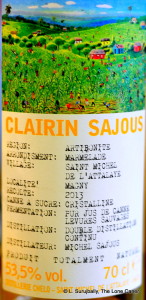 [1] Clairin Sajous – Haiti
[1] Clairin Sajous – Haiti
If creole still haitian white rums not made by Barbancourt had a genesis in the wider world’s perceptions, it might have been this one and its cousins. In my more poetic moments I like to say the Sajous didn’t get introduced, it got detonated, and the reverbrations are still felt today. There were always white unaged popskulls around – this one and the Vaval and Casimir gave them respectability.
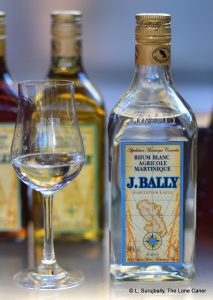 [2] J. Bally Blanc Agricole – Martinique
[2] J. Bally Blanc Agricole – Martinique
What a lovely rum this is indeed. J. Bally has been around for ages, and they sure know what they’re doing. This one is aged for three months and filtered to white, yet somehow it still shows off some impressive chops. The 50% helps for sure. Apples, watermelon, some salt and olives and tobacco on the nose, while the palate is softer than the strength might suggest, sweet, with fanta, citrus, thyme carrying the show. Yummy.
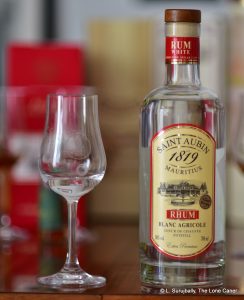 [3] St. Aubin Agricole Rhum Blanc – Mauritius
[3] St. Aubin Agricole Rhum Blanc – Mauritius
New Grove, Gold of Mauritius and Lazy Dodo might be better known right now, but Chamarel and St Aubin are snapping at their heels. St. Aubin made this phenomenal pot still 50% brutus and I can’t say enough good things about it. It has a 1960’s-style Batman style salad bar of Pow! Biff! Smash! Brine, grass, herbs, salt beef and gherkins combine in a sweaty, hairy drink that is amazingly controlled white rhum reminiscent of both a clairin and a Jamaican.
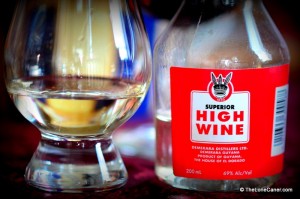 [4] DDL Superior High Wine – Guyana
[4] DDL Superior High Wine – Guyana
Nope, it’s not a wine, and it sure isn’t superior. I’m actually unsure whether it’s still made any longer – and if it is, whether it’s made on the same still as before. Whatever the case, Guyanese swear by it, I got one of my first drunks on it back in University days, and the small bottle I got was pungent, fierce and just about dissolved my glass. At 69% it presents as grassy, fruity, and spicy, with real depth to the palate, and if it’s a raw scrape of testosterone-fuelled sandpaper on the glottis, well, I’ve warned you twice now.
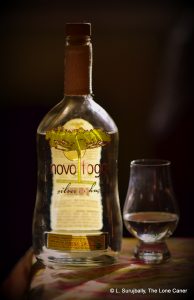 [5] Novo Fogo Silver Cachaca – Brazil
[5] Novo Fogo Silver Cachaca – Brazil
Fair enough, there are thousands of cachacas in Brazil, and at best I’ve tried a couple of handfuls. Of the few that crossed my path, whether aged or not, this one was a standout for smooth, sweet, aromatic flavours that delicately mixed up sweet and salt and a nice mouthfeel – even at 40% it presented well. Josh Miller scored it as his favourite with which to make a caipirinha some time back when he was doing his 14-rum cachaca challenge. Since it isn’t all that bombastic or adversarial, it may be one of the more approachable rums of its kind that is – best of all – quite widely available.
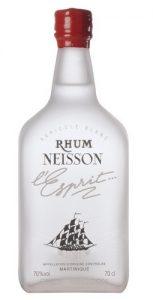 [6] Neisson L’Espirit 70° Blanc – Martinique
[6] Neisson L’Espirit 70° Blanc – Martinique
Breathe deep and easy on this one, and sip with care. Then look at the glass again, because if your experience parallels mine, you’ll be amazed that this is a 140-proof falling brick of oomph – it sure doesn’t feel that way. In fact there’s a kind of creaminess mixed up with nuts and citrus that is extremely enjoyable, and when I tried (twice), I really did marvel that so much taste could be stuffed into an unaged spirit and contained so well.
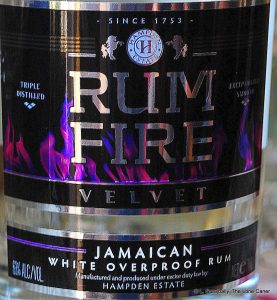 [7] Rum Fire Velvet – Jamaica
[7] Rum Fire Velvet – Jamaica
Whew! Major tongue scraper. Massive taste, funk and dunder squirt in all directions. Where these whites are concerned, my tastes tend to vacillate between clairins and Jamaicans, and here the family resemblance is clear. Tasting notes like beeswax, rotten fruit and burnt sausages being fried on a stinky kero flame should not dissuade you from giving this one a shot at least once, though advisories are in order, it being 63% and all.
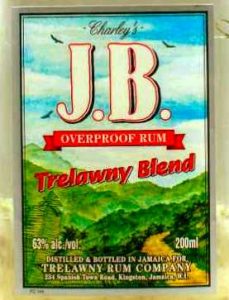 [8] Charley’s JB Overproof (same as J. Wray 63%) – Jamaica
[8] Charley’s JB Overproof (same as J. Wray 63%) – Jamaica
A big-’n’-bad Jamaican made only for country lads for the longest while, before townies started screaming that the boys in the backdam shouldn’t have all the fun and it got issued more widely on the island. Very similar to the J. Wray & Nephew White Overproof with which it should share the spotlight, because they’re twins in all but name..
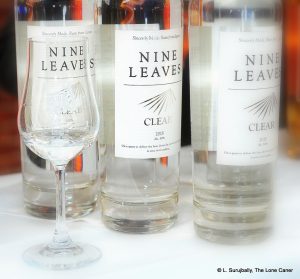 [9] Nine Leaves Clear 2015 – Japan
[9] Nine Leaves Clear 2015 – Japan
If Yoshiharu Takeuchi of the Japanese concern Nine Leaves wasn’t well known before he released the Encrypted for Velier’s 70th Anniversary, he should be. He’s a Japanese rum renaissance samurai, a one-man distillery operation, marketing manager, cook and candlestick maker – and his 50% unaged whites are excellent. This one from 2015 melded a toned down kind of profile, redolent of soap, cinnamon, nutmeg, apples and other light fruits, and is somewhat better behaved than its Caribbean cousins…and a damned decent rum, a velvet sleeve within which lurks a well made glittering wakizashi. (the 2017 ain’t bad either).
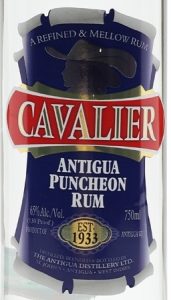 [10] Cavalier Rum Puncheon White 65% – Antigua
[10] Cavalier Rum Puncheon White 65% – Antigua
Same as the 151 but with little a few less rabbits in its jock. Since the Antigua Distiller’s 1981 25 year old was review #001 and I liked it tremendously (before moving on) I have a soft spot for the company…which shouldn’t dissuade anyone from trying this raging beast, because in it you can spot some of those delicate notes of blackberries and other fruit which I so enjoyed in their older offerings. Strong yes, a tad thin, and well worth a try.
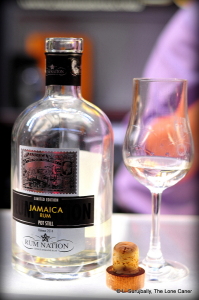 [11] Rum Nation Pot Still White 57% – Jamaica
[11] Rum Nation Pot Still White 57% – Jamaica
One of the first Independents to go the whole hog with a defiantly unaged white. It’s fierce, it’s smelly, it’s flavourful, and an absolute party animal. I call mine Bluto. It’s won prizes up and down the festival circuit (including 2017 Berlin where I tried it again) and with good reason – it’s great, attacking with thick, pot still funk and yet harnessing some delicacy and quieter flavours too.
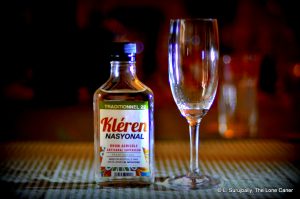 [12] Kleren Nasyonal Traditionnal 22 Rhum Blanc – Haiti
[12] Kleren Nasyonal Traditionnal 22 Rhum Blanc – Haiti
Moscoso Distillers is the little engine that could – I suspect that if Velier had paused by their place back when Luca was sourcing Haitian clairins to promote, we’d have a fifth candidate to go alongside Sajous,Vaval, Casimir and La Rocher. Like most creole columnar still products made in Haiti, it takes some palate-adjustment to dial in its fierce, uncompromising nature properly. And it is somewhat rough, this one, perhaps even jagged. But the tastes are so joyously, unapologetically there, that I enjoyed it just as much as other, perhaps more genteel products elsewhere on this list.
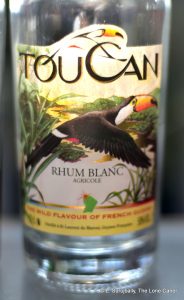 [13] Toucan 50% Rhum Blanc Agricole – French Guiana
[13] Toucan 50% Rhum Blanc Agricole – French Guiana
This new white only emerged in the last year or two, and for a rum as new as this to make the list should tell you something. I tried it at the 2017 Berlin rumfest and liked it quite a bit, because it skated the line between brine, olives, furniture polish and something sweeter and lighter (much like the Novo Fogo does, but with more emphasis)…and at 50% it has the cojones to back up its braggadocio. It’s a really good white rhum.
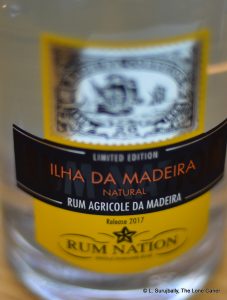 [14] Rum Nation Ilha de Madeira Agricole 2017
[14] Rum Nation Ilha de Madeira Agricole 2017
Lovely 50% white, with an outstanding flavour profile. Not enough research available yet for me to talk about its antecedents aside from it being of Madeira origin and “natural” (which I take to mean unaged for the moment). But just taste the thing – a great combo of soda pop and more serious flavours of brine, gherkins, grass, vanilla, white chocolate. There’s edge to it and sweet and sour and salt and it comes together reallly well. One of those rums that will likely gain wide acceptance because of being toned down some. Reminds me of both the Novo Fogo and the St. Aubin whites, with some pot still Jamaican thrown in for kick.
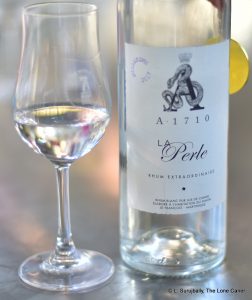 [15] A1710 La Perle
[15] A1710 La Perle
A1710 is a new kid on the block out of Martinique, operating out of Habitation Simon. This white they issued at 54.5% is one of the best ones I’ve tried. Nose of phenols, swank, acetones, freshly sawn lumber, bolted onto a nearly indecently tasty palate of wax, licorice, sugar water, sweet bonbons and lemongrass. It’s almost cachaca-like…just better.
…
This list was supposed to be ten but then it grew legs and fangs, so what the hell, here are a few more Honourable Mentions for the rabid among you…
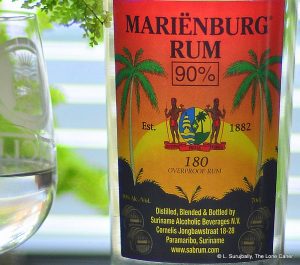 [16] Marienburg 90% – Suriname
[16] Marienburg 90% – Suriname
This is Blanc Vader. With two light sabers. Admittedly, I only included it to showcase the full power of the blanc side. It’s not really that good. However, if you have it (or scored a sample off me) then you’ve not only gotten two standard proofed bottles for the price of one but also the dubious distinction of possessing full bragging rights at any “I had the strongest rum ever” competition. Right now, I’m one of the few of those.
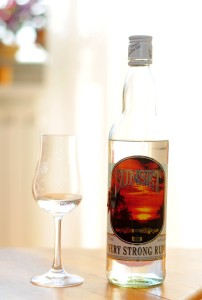 [17] Sunset Very Strong Overproof 84.5%)
[17] Sunset Very Strong Overproof 84.5%)
The runner up in the strength sweepstakes. Even at that strength, it has a certain creamy delicacy to it which elevates it above the Marienburg. Overall, it’s not really suited for anything beyond a mix and more bragging rights — because the hellishly ferocious palate destroys everything in its path. It’s a Great White, sure…like Jaws.
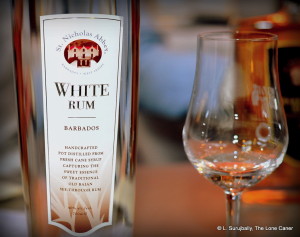 [18] St. Nicholas Abbey Unaged White – Barbados
[18] St. Nicholas Abbey Unaged White – Barbados
This is another very approachable white rum, unaged, a “mere” 40% which blew the Real McCoy 3 year old white away like a fart in a high wind. Part of it is its pot still antecedents. It’s salty sweet (more sweet than salt) with a juicy smorgasbord of pretty flavours dancing lightly around without assaulting you at the same time. A great combo of smoothness and quiet strength and flavour all at once, very approachable, and much more restrained (ok, it’s weaker) than others on this list.
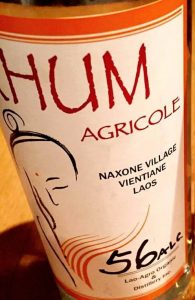 [19] Vientain Loatan – Laos
[19] Vientain Loatan – Laos
Probably the least of all these rhums in spite of being bottled at 56%, and the hardest to find due to it hardly being exported, and mostly sold in Asia. On the positive side is the strength and the tastes, very similar to agricoles. On the negative some of those tastes are bitter and don’t play well together, the balance is off and overall it’s a sharp and raw rhum akin to uncured vinegar, in spite of some sweet and citrus. Hard to recommend, but hard to ignore too. May be worth a few tries to come to grips with it.
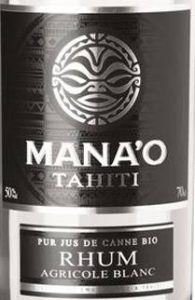 [20] Mana’o Rhum Agricole Blanc – Tahiti
[20] Mana’o Rhum Agricole Blanc – Tahiti
Not so unique, not so fierce, not so pungent as other 50% rums on this list, but tasty nevertheless. Again, like Rum Nation’s Ilha de Madeira, it’s quite easily appreciated because the 50% ABV doesn’t corner you in an alley, grab you by the glottis and shake you down for your spare cash, and is somehow tamed into a more well-behaved sort of beast, with just a bit of feral still lurking behind it all.
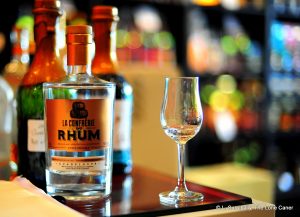 [21] La Confrérie du Rhum 2014 Cuvée Speciale Rhum Blanc – Guadeloupe
[21] La Confrérie du Rhum 2014 Cuvée Speciale Rhum Blanc – Guadeloupe
A hot, unaged, spicy 50% blanc, with an estery nose, firm body and all round excellent series of tastes that do the Longueteau operation proud. It’s lighter than one might expect for something at this strength, and overall is a solid, tasty and well-put-together white rhum. La Confrerie is a quasi-independent operation run by Benoit Bail and Jerry Gitany and they do single cask bottlings from time to time – their focus is agricoles, and all that knowledge and promotion sure isn’t going to waste.
So there you have it, a whole bunch of modern white rums spanning the globe for you to take a look at (as noted above, I’ve missed some, but then, I haven’t tried them all).
I used to think that whites were offhand efforts tossed indifferently into the rum lineup by producers who focused on “more serious work” and gave them scant attention, as if they were the bastard offspring of glints in the milkman’s eye. No longer.
Nowadays they are not only made seriously but taken seriously, and I know several bartenders who salivate at the mere prospect of getting a few of these torqued up high-tension hooches to play with as they craft their latest cocktail. I drink ‘em neat, others mix ‘em up, but whatever the case, it is my firm belief you should try some of the rums on this list at least once, just to see what the hell the ‘Caner is ranting on about. I almost guarantee you won’t be entirely disappointed.
And bored? No chance.
Other notes
Consider this a companion piece to Josh Miller’s excellent rundown of 12 agricoles, taken from his perspective of how they fare in a Ti Punch.
Two years after publishing this list in 2017, I found others, and so published a list of 21 More White Rums in 2019, and would you believe it, the niche expanded sufficiently to add yet another 21 in 2022.
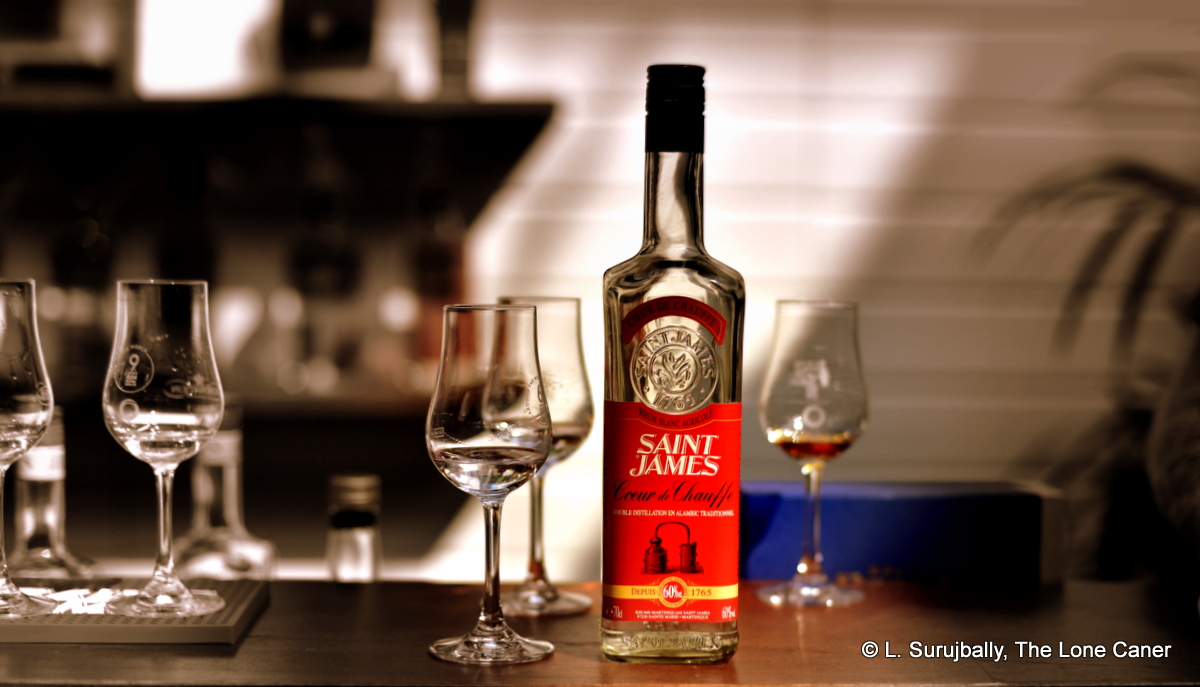
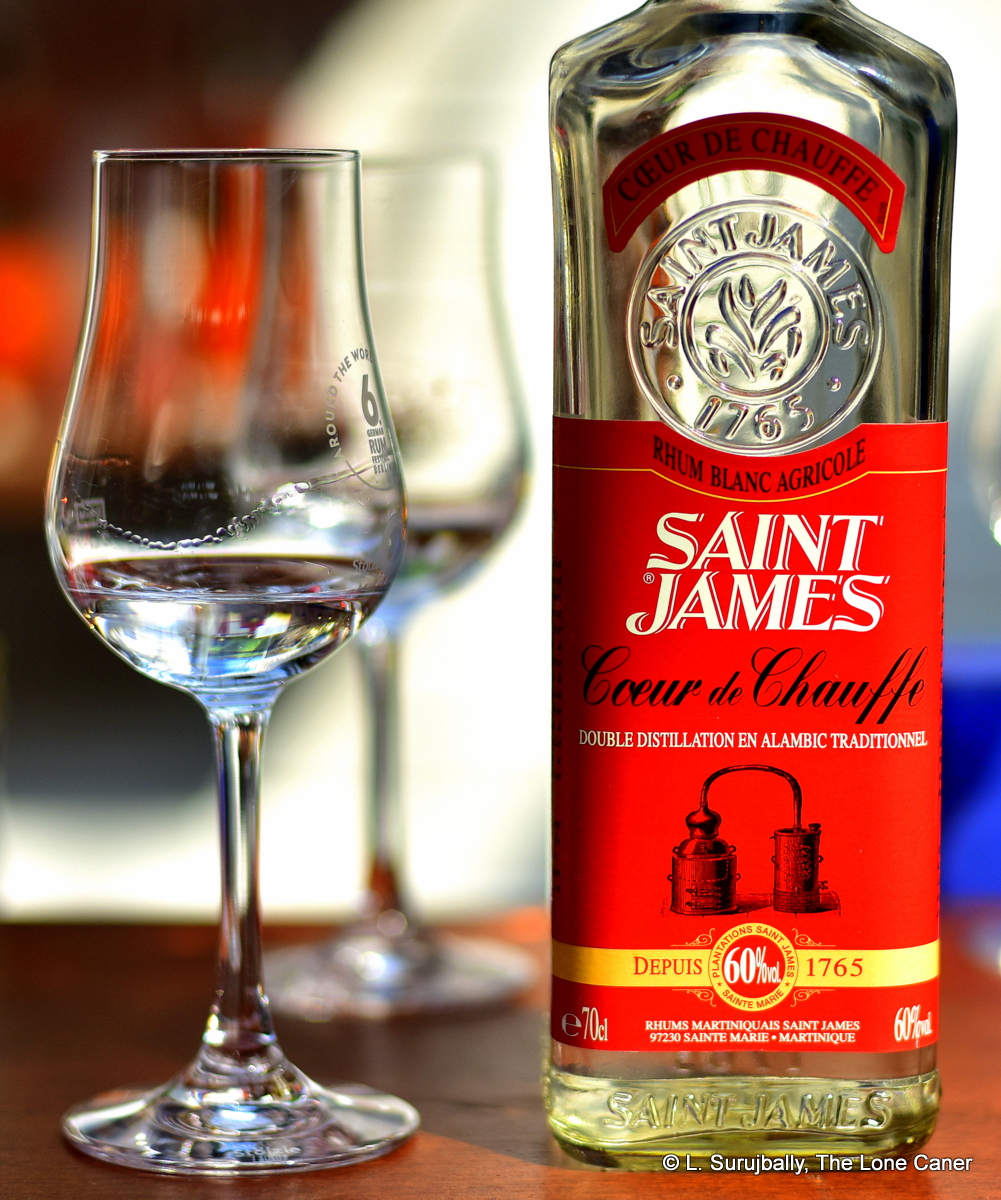 And also because, man, did this thing ever smell pungent — it was a bottle-sized 60-proof ode to whup-ass and rumstink. A barrage of nail polish, spoiling fruit, wood chips, wax, salt, and gluey notes all charged right out without pause or hesitation, spoiling for a fight. Even without making a point of it, the rhum unfolded with uncommon firmness into aromas of sweet, grassy herbals, green apples, sugar water, dill, cider, vegetables, toasted bread, a sharp mature cheddar, all mixed in with moist dark earth, sugar water, biscuits, orange peel. And the balance of all of them was really quite good, truly.
And also because, man, did this thing ever smell pungent — it was a bottle-sized 60-proof ode to whup-ass and rumstink. A barrage of nail polish, spoiling fruit, wood chips, wax, salt, and gluey notes all charged right out without pause or hesitation, spoiling for a fight. Even without making a point of it, the rhum unfolded with uncommon firmness into aromas of sweet, grassy herbals, green apples, sugar water, dill, cider, vegetables, toasted bread, a sharp mature cheddar, all mixed in with moist dark earth, sugar water, biscuits, orange peel. And the balance of all of them was really quite good, truly.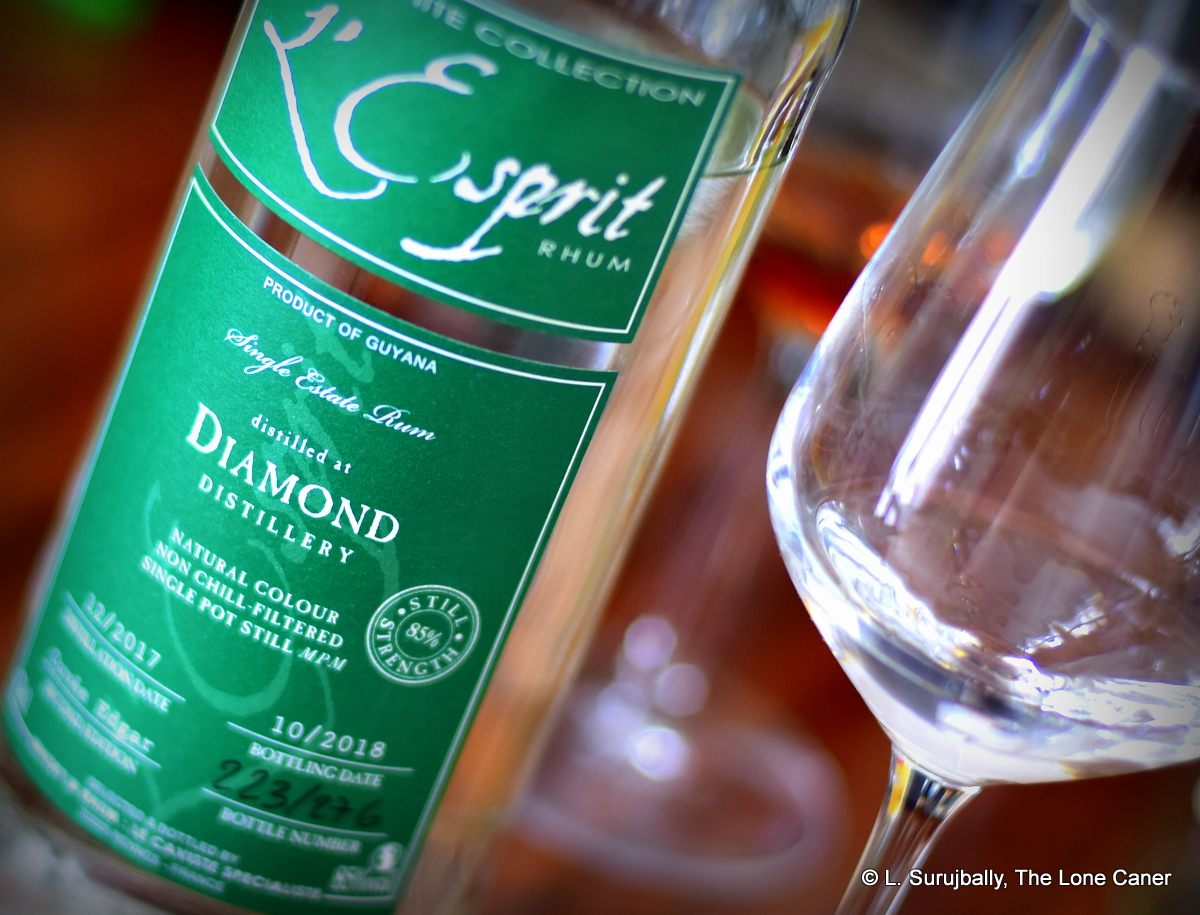
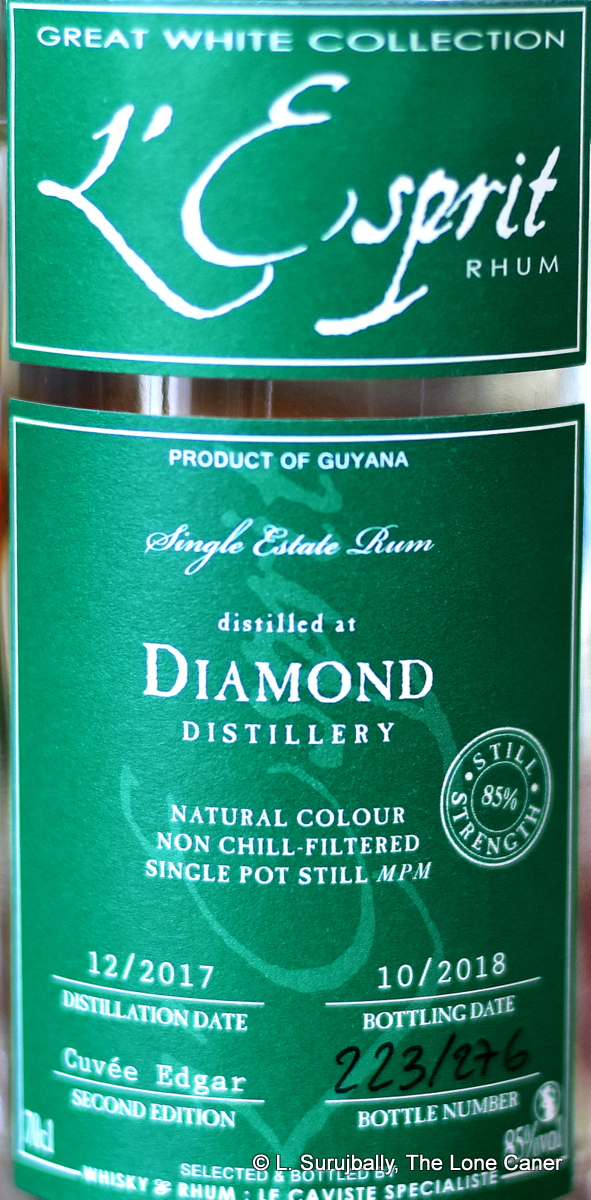 I’ll get straight to it, then, and merely mention that at 85% ABV, care was taken – I poured, covered the glass, waited, removed the cover, and prudently stepped way back.
I’ll get straight to it, then, and merely mention that at 85% ABV, care was taken – I poured, covered the glass, waited, removed the cover, and prudently stepped way back.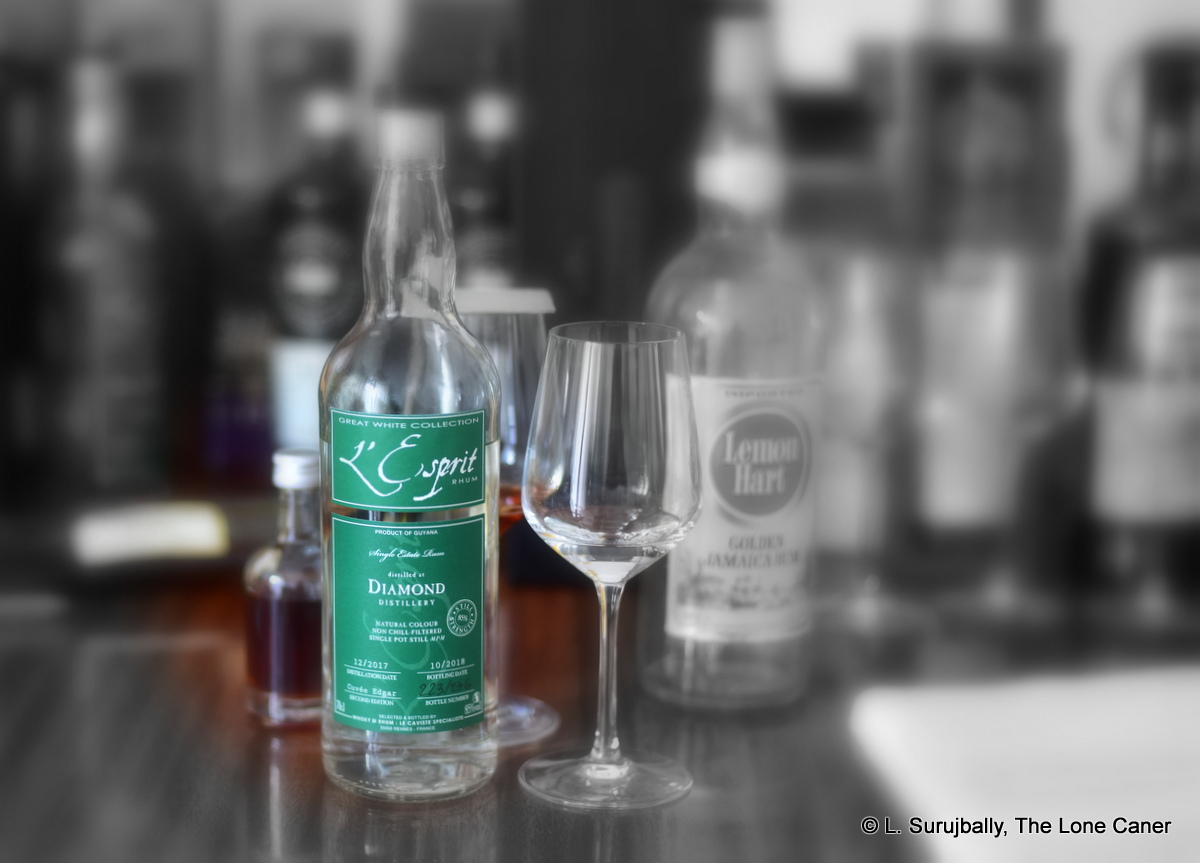
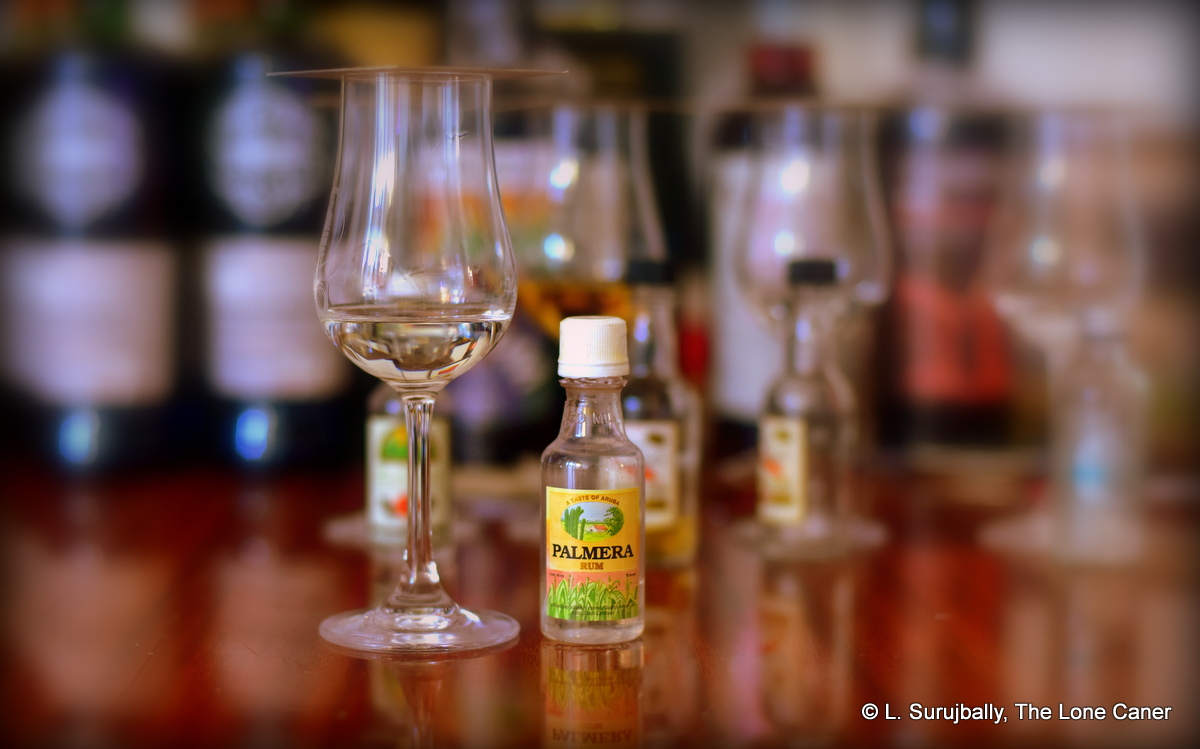
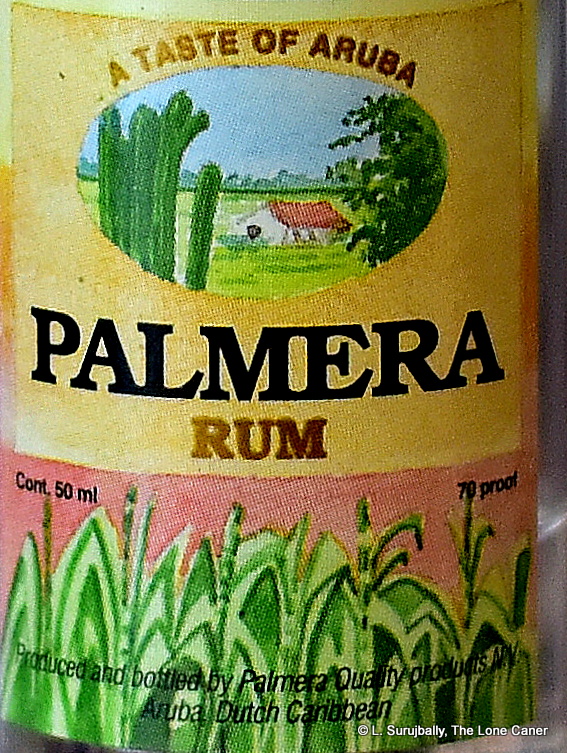
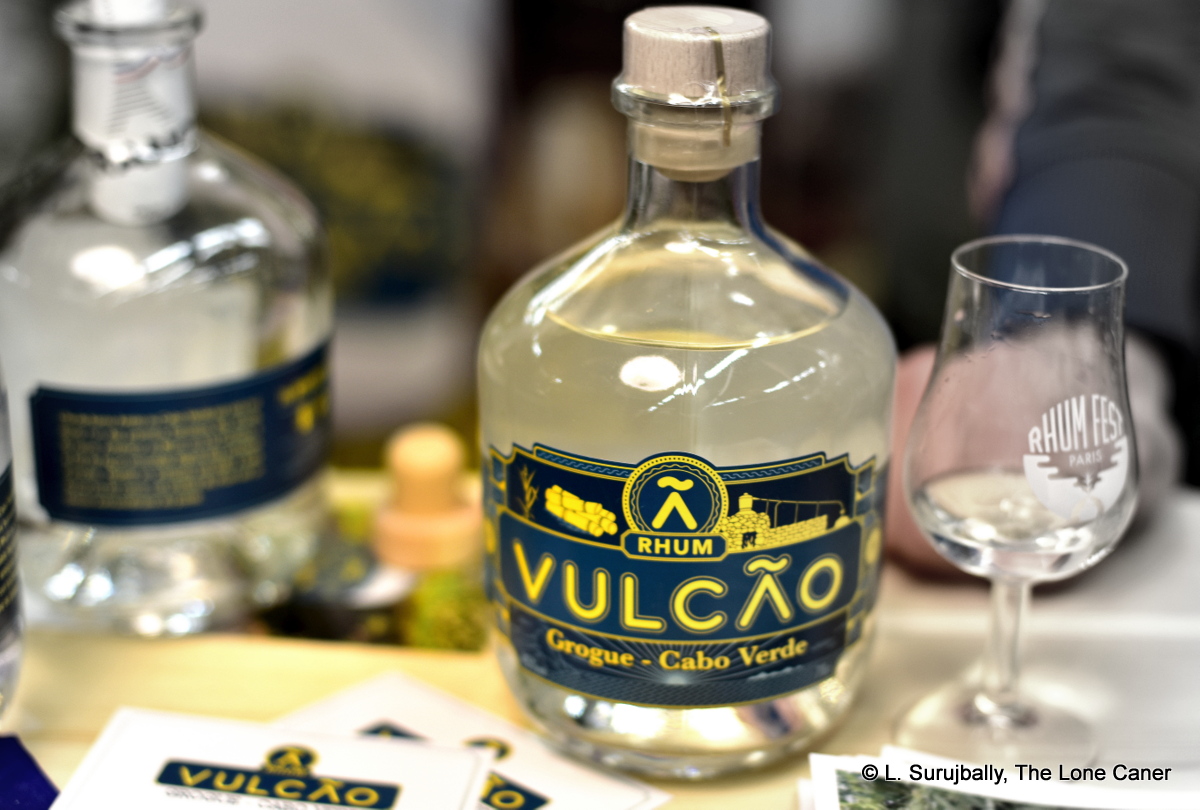
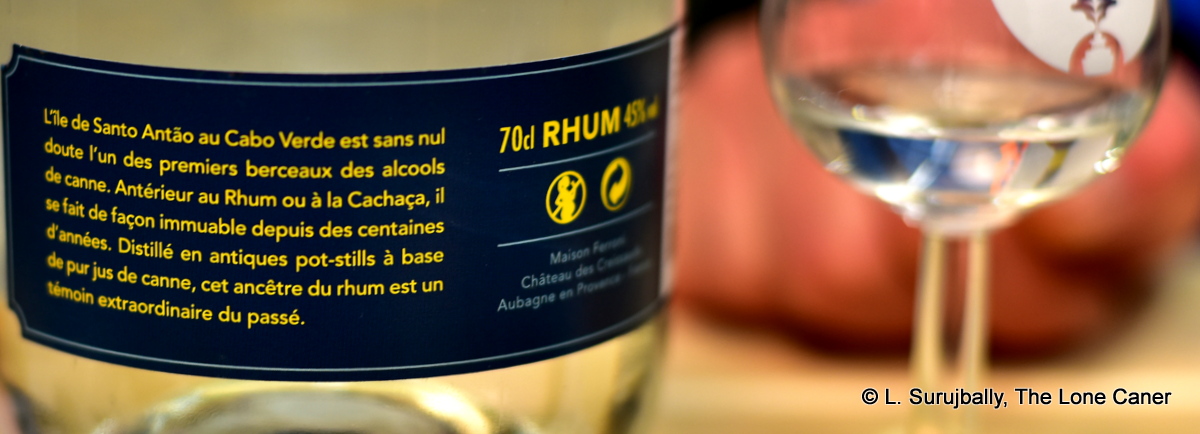
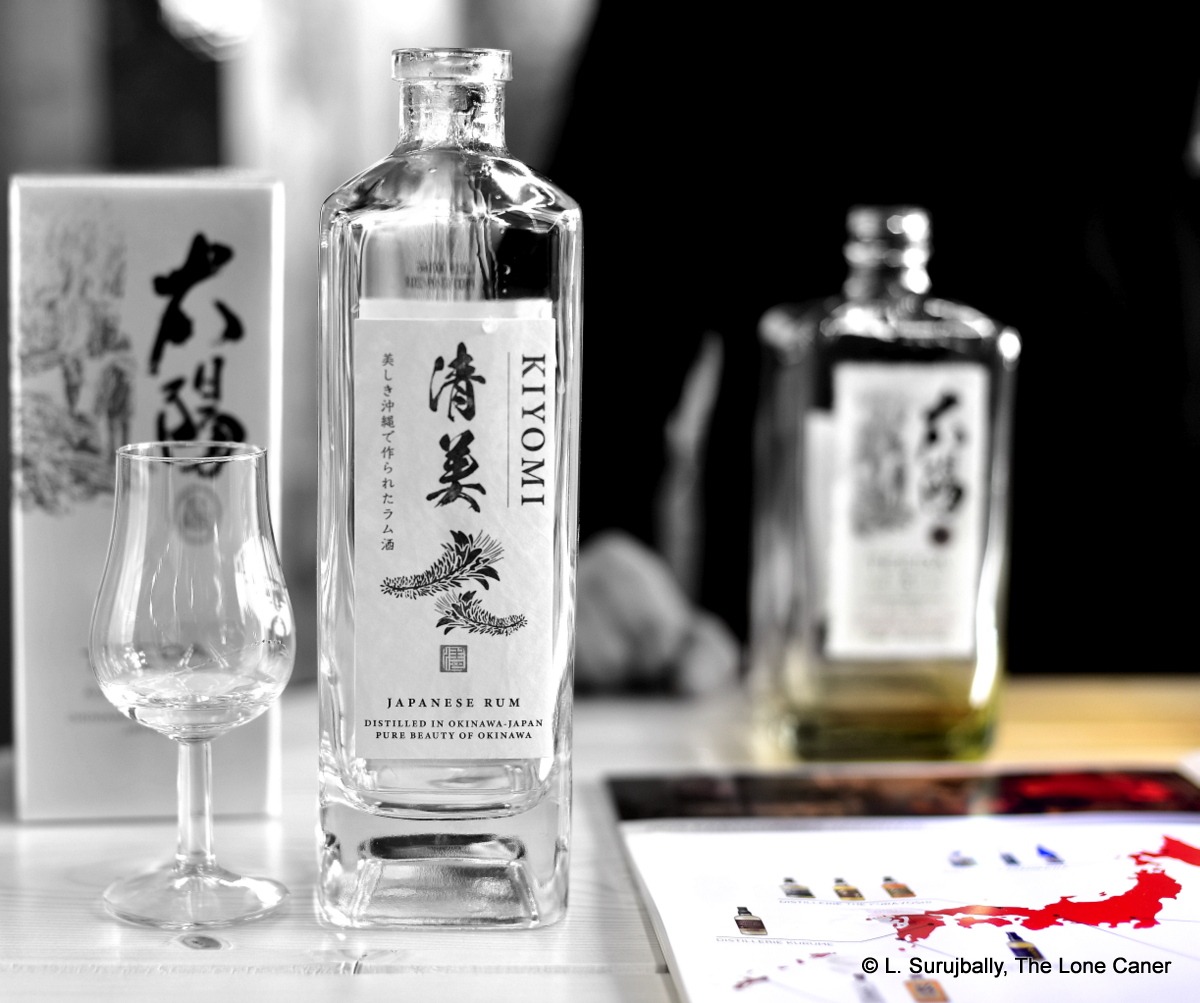
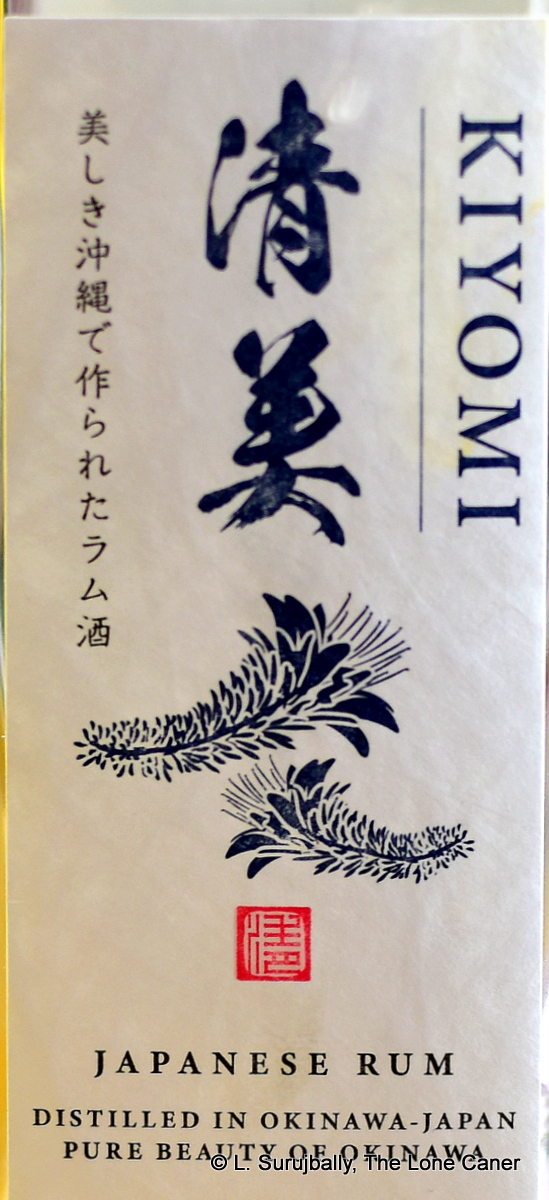 I’ve never been completely clear as to what effect a resting period in neutral-impact tanks would actually have on a rum – perhaps smoothen it out a bit and take the edge off the rough and sharp straight-off-the-still heart cuts. What is clear is that here, both the time and the reduction gentle the spirit down without completely losing what makes an unaged white worth checking out. Take the nose: it was relatively mild at 40%, but retained a brief memory of its original ferocity, reeking of wet soot, iodine, brine, black olives and cornbread. A few additional nosings spread out over time reveal more delicate notes of thyme, mint, cinnamon mingling nicely with a background of sugar water, sliced cucumbers in salt and vinegar, and watermelon juice. It sure started like it was out to lunch, but developed very nicely over time, and the initial sniff should not make one throw it out just because it seems a bit off.
I’ve never been completely clear as to what effect a resting period in neutral-impact tanks would actually have on a rum – perhaps smoothen it out a bit and take the edge off the rough and sharp straight-off-the-still heart cuts. What is clear is that here, both the time and the reduction gentle the spirit down without completely losing what makes an unaged white worth checking out. Take the nose: it was relatively mild at 40%, but retained a brief memory of its original ferocity, reeking of wet soot, iodine, brine, black olives and cornbread. A few additional nosings spread out over time reveal more delicate notes of thyme, mint, cinnamon mingling nicely with a background of sugar water, sliced cucumbers in salt and vinegar, and watermelon juice. It sure started like it was out to lunch, but developed very nicely over time, and the initial sniff should not make one throw it out just because it seems a bit off.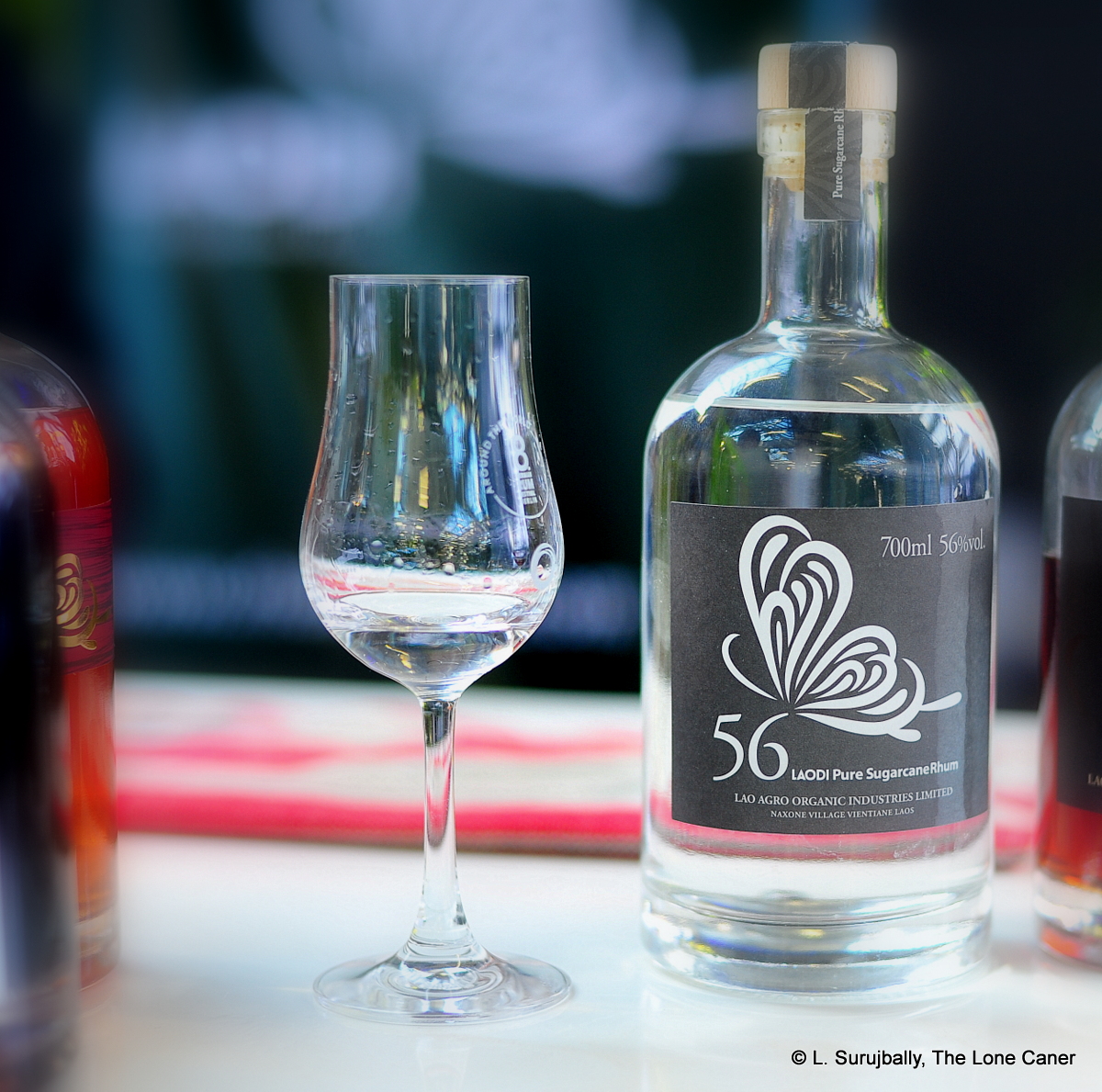
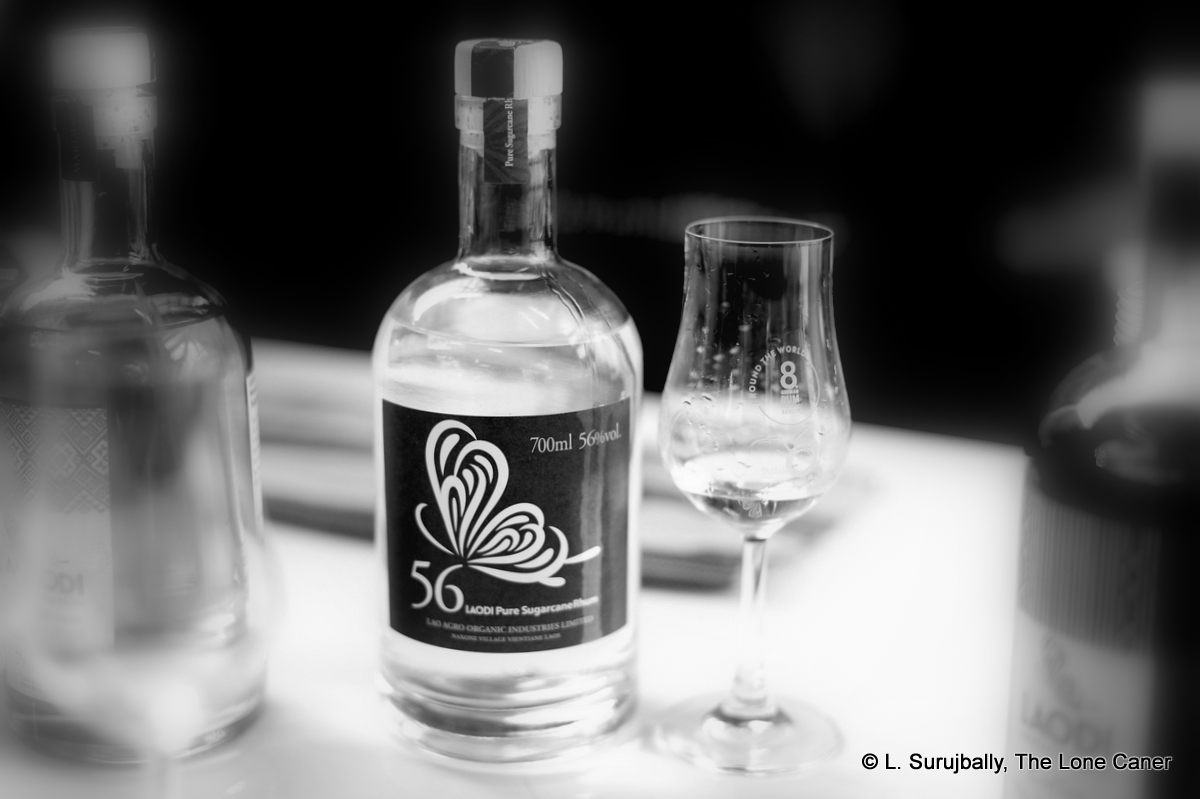

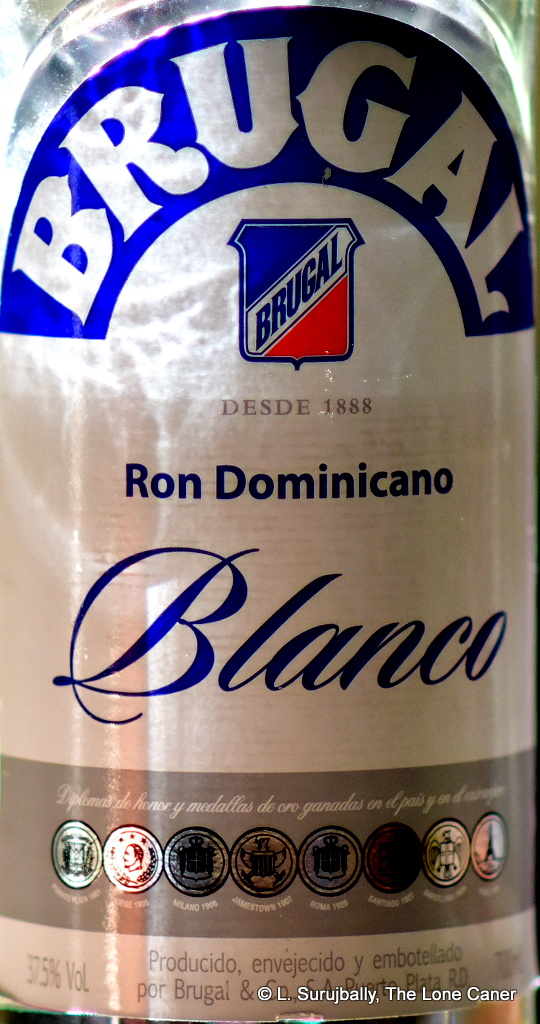
 Rumaniacs Review #091 | 0598
Rumaniacs Review #091 | 0598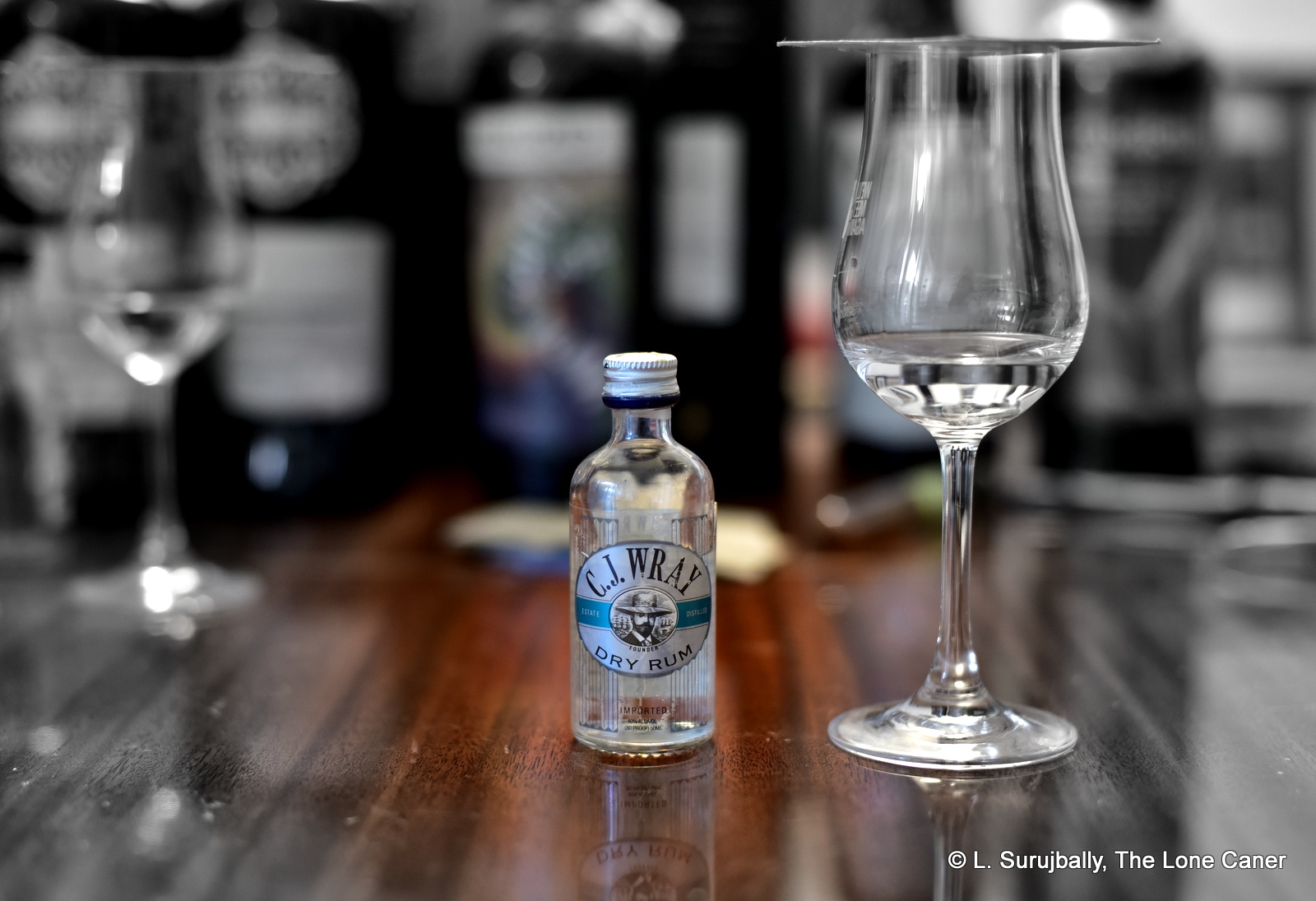
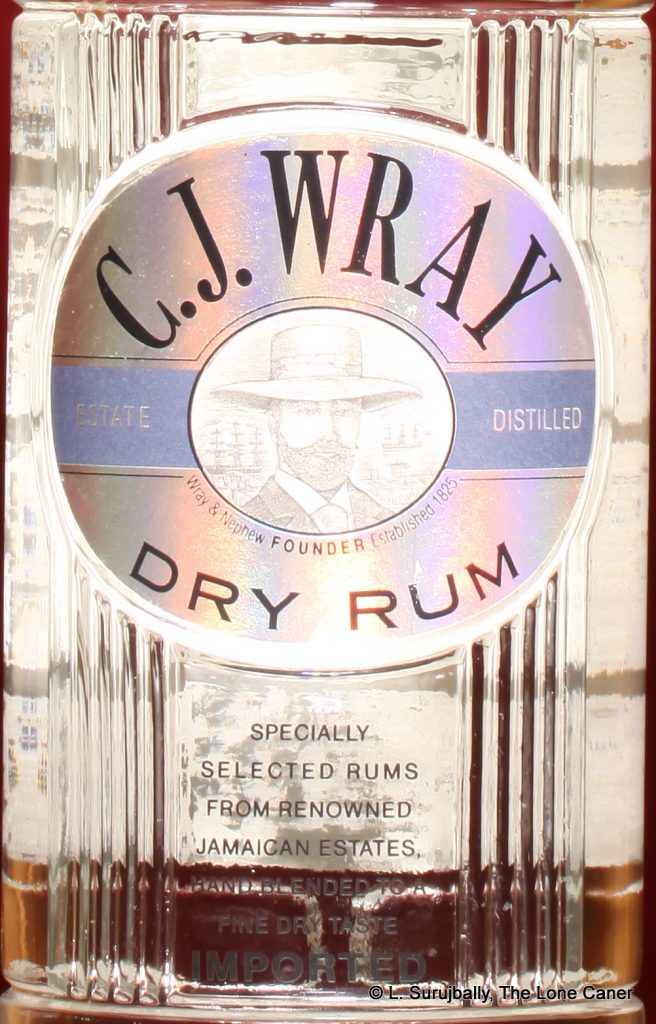 Technical details are murky. All right, they’re practically non-existent. I think it’s a filtered column still rum, diluted down to standard strength, but lack definitive proof – that’s just my experience and taste buds talking, so if you know better, drop a line. No notes on ageing – however, in spite of one reference I dug up which noted it as unaged, I think it probably was, just a bit.
Technical details are murky. All right, they’re practically non-existent. I think it’s a filtered column still rum, diluted down to standard strength, but lack definitive proof – that’s just my experience and taste buds talking, so if you know better, drop a line. No notes on ageing – however, in spite of one reference I dug up which noted it as unaged, I think it probably was, just a bit.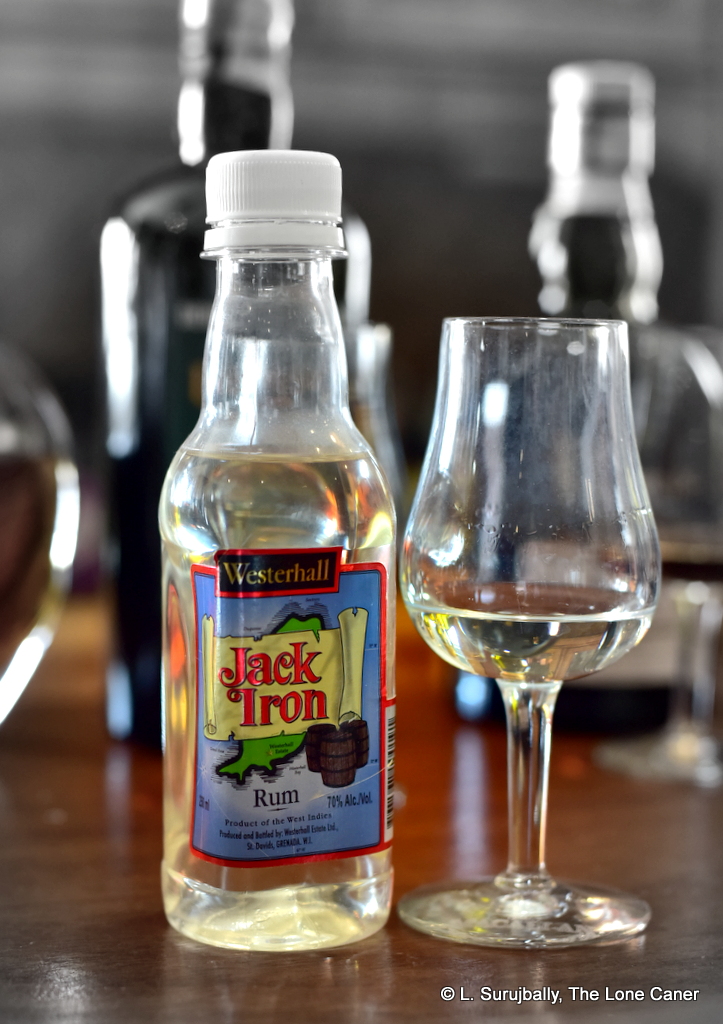 The Jack Iron rum from Westerhall is a booming overproof issued both in a slightly aged and a white version, and both are a whopping 70% ABV. While you can get it abroad — this bottle was tried in Italy, for example — my take is that it’s primarily a rum for local consumption (though which island can lay claim to it is a matter of idle conjecture), issued to paralyze brave-but-foolhardy tourists who want to show off their Chewbacca chests by drinking it neat, or to comfort the locals who don’t have time to waste getting hammered and just want to do it quick time. Add to that the West Indian slang for manly parts occasionally being iron and you can sense a sort of cheerful and salty islander sense of humour at work (see “other notes” below for an alternative backstory).
The Jack Iron rum from Westerhall is a booming overproof issued both in a slightly aged and a white version, and both are a whopping 70% ABV. While you can get it abroad — this bottle was tried in Italy, for example — my take is that it’s primarily a rum for local consumption (though which island can lay claim to it is a matter of idle conjecture), issued to paralyze brave-but-foolhardy tourists who want to show off their Chewbacca chests by drinking it neat, or to comfort the locals who don’t have time to waste getting hammered and just want to do it quick time. Add to that the West Indian slang for manly parts occasionally being iron and you can sense a sort of cheerful and salty islander sense of humour at work (see “other notes” below for an alternative backstory).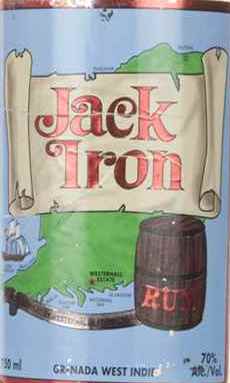

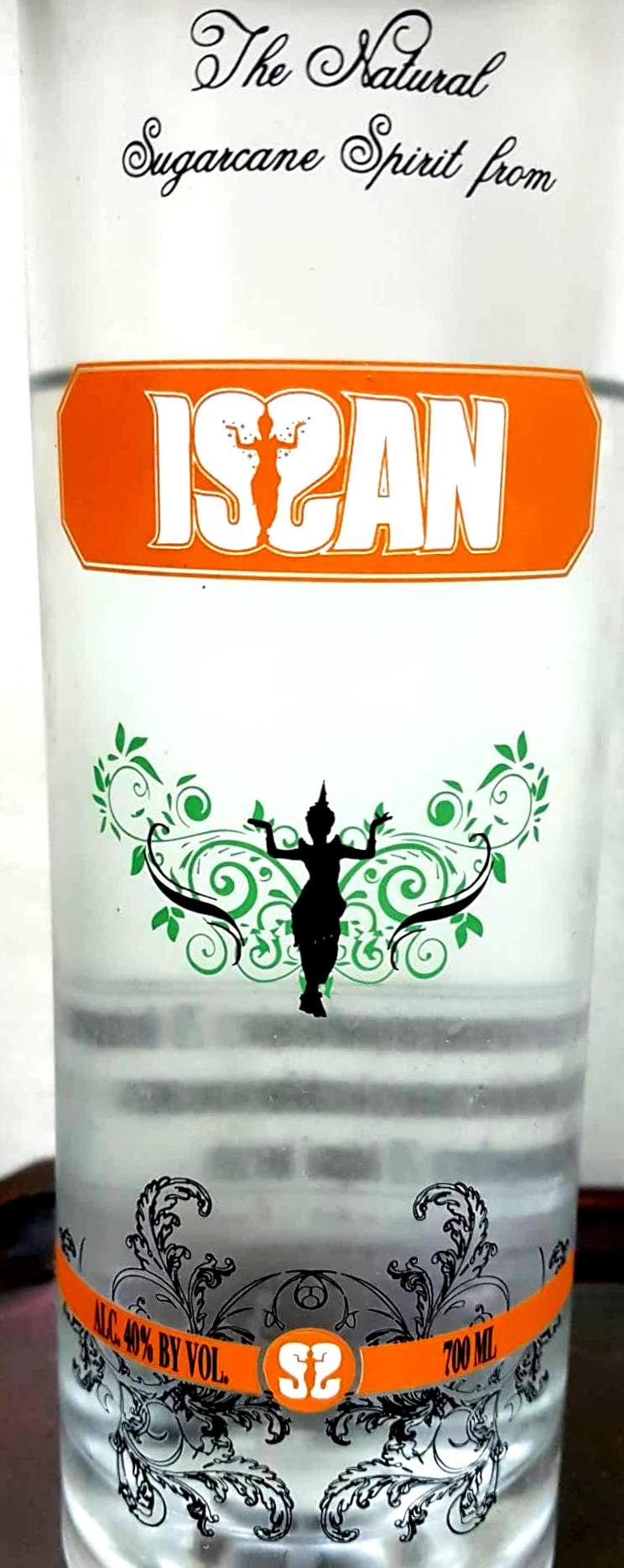 Thailand doesn’t loom very large in the eyes of the mostly west-facing rum writers’ brigade, but just because they make it for the Asian palate and not the Euro-American cask-loving rum chums, doesn’t mean what they make can be ignored; similar in some respects to the light rums from Puerto Rico, Dominican Republic, Panama and Latin America, they may not be rums
Thailand doesn’t loom very large in the eyes of the mostly west-facing rum writers’ brigade, but just because they make it for the Asian palate and not the Euro-American cask-loving rum chums, doesn’t mean what they make can be ignored; similar in some respects to the light rums from Puerto Rico, Dominican Republic, Panama and Latin America, they may not be rums 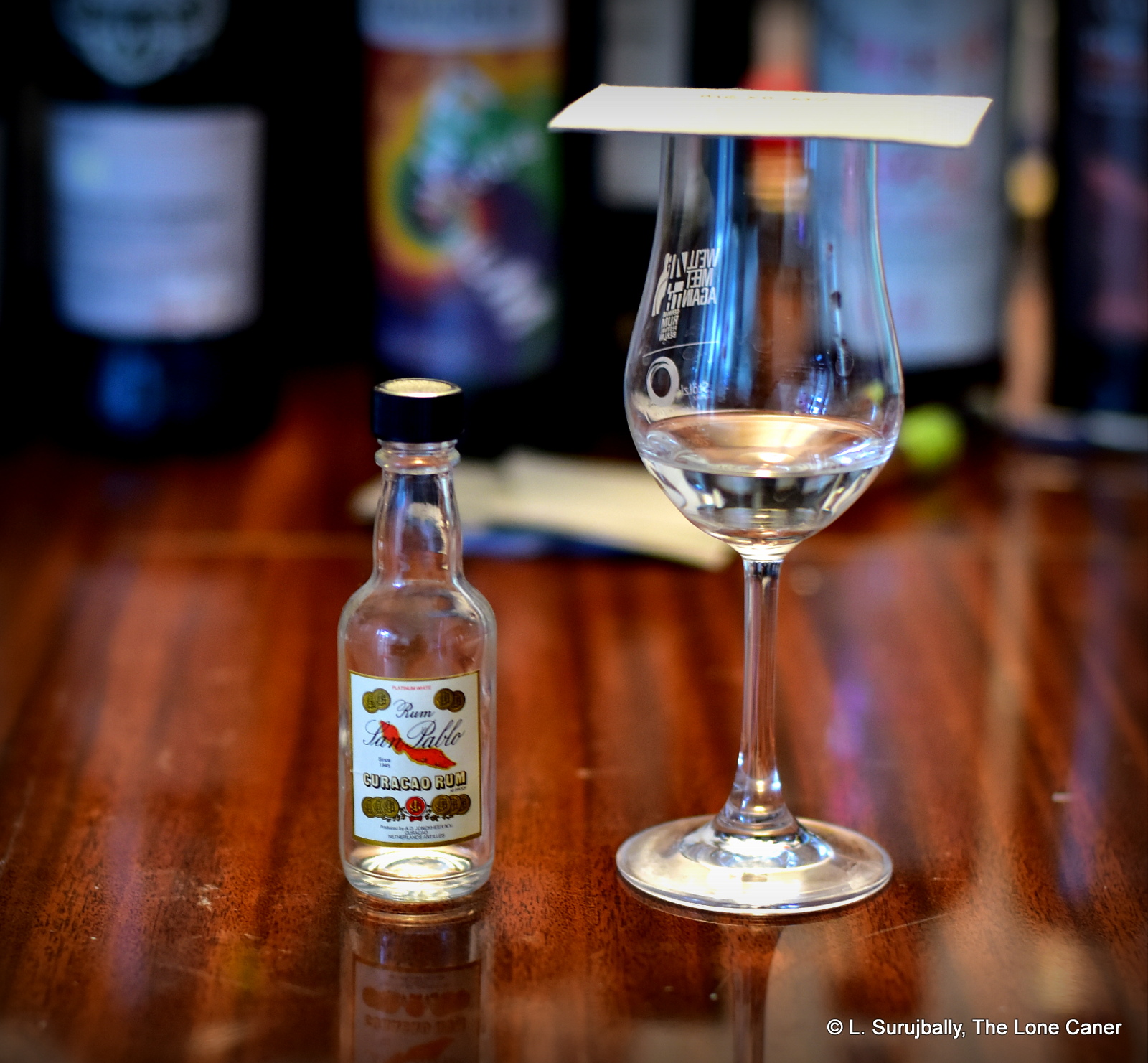
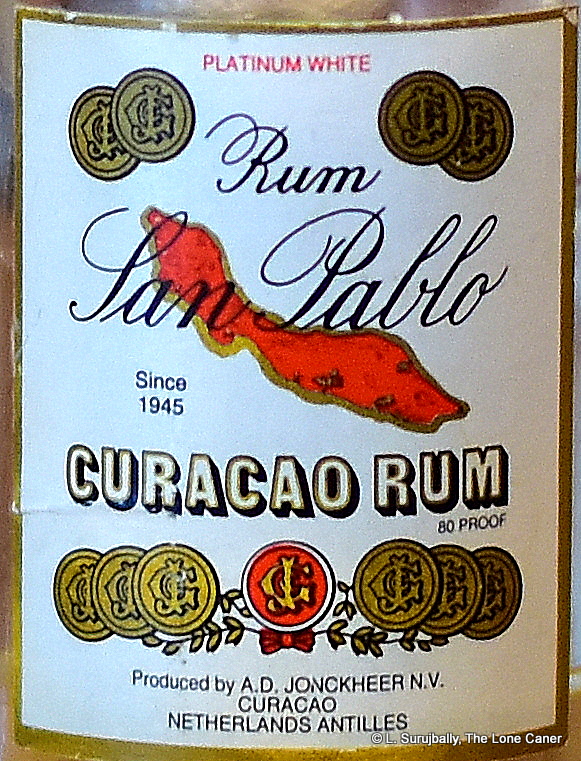 And that creates a rum of uncommon docility. In fact, it’s close to being the cheshire cat of rums, so vaguely does it present itself. The soft silky nose was a watery insignificant blend of faint nothingness. Sugar water – faint; cucumbers – faint; cane juice – faint; citrus zest – faint (in fact here I suspect the lemon was merely waved rather gravely over the barrels before being thrown away); some cumin, and it’s possible that some molasses zipped past my nose, too fast to be appreciated.
And that creates a rum of uncommon docility. In fact, it’s close to being the cheshire cat of rums, so vaguely does it present itself. The soft silky nose was a watery insignificant blend of faint nothingness. Sugar water – faint; cucumbers – faint; cane juice – faint; citrus zest – faint (in fact here I suspect the lemon was merely waved rather gravely over the barrels before being thrown away); some cumin, and it’s possible that some molasses zipped past my nose, too fast to be appreciated. 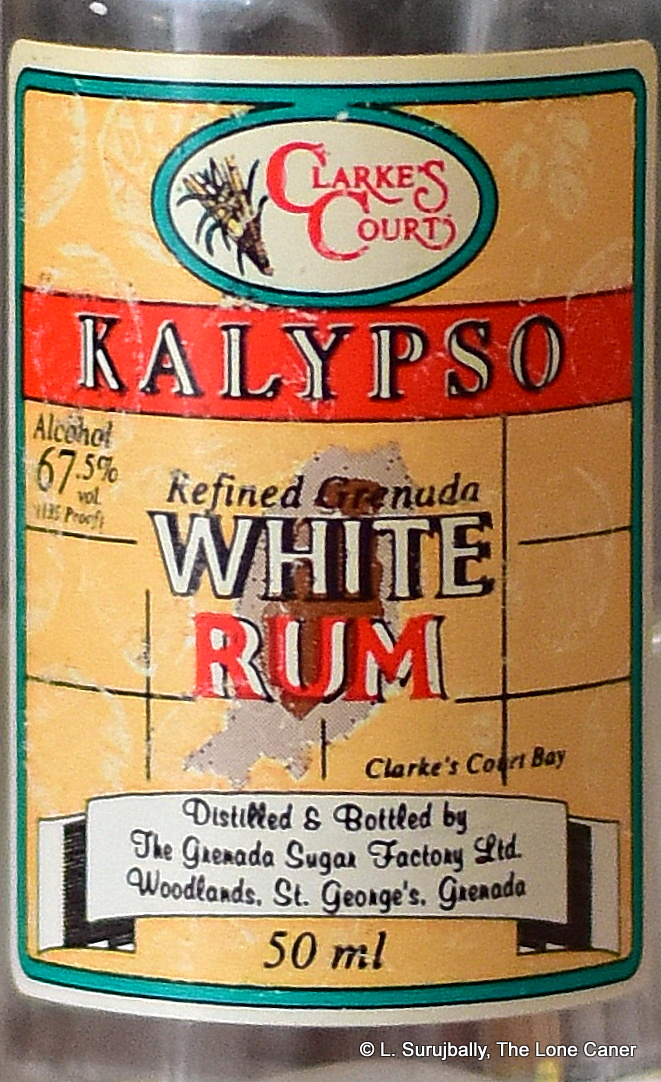
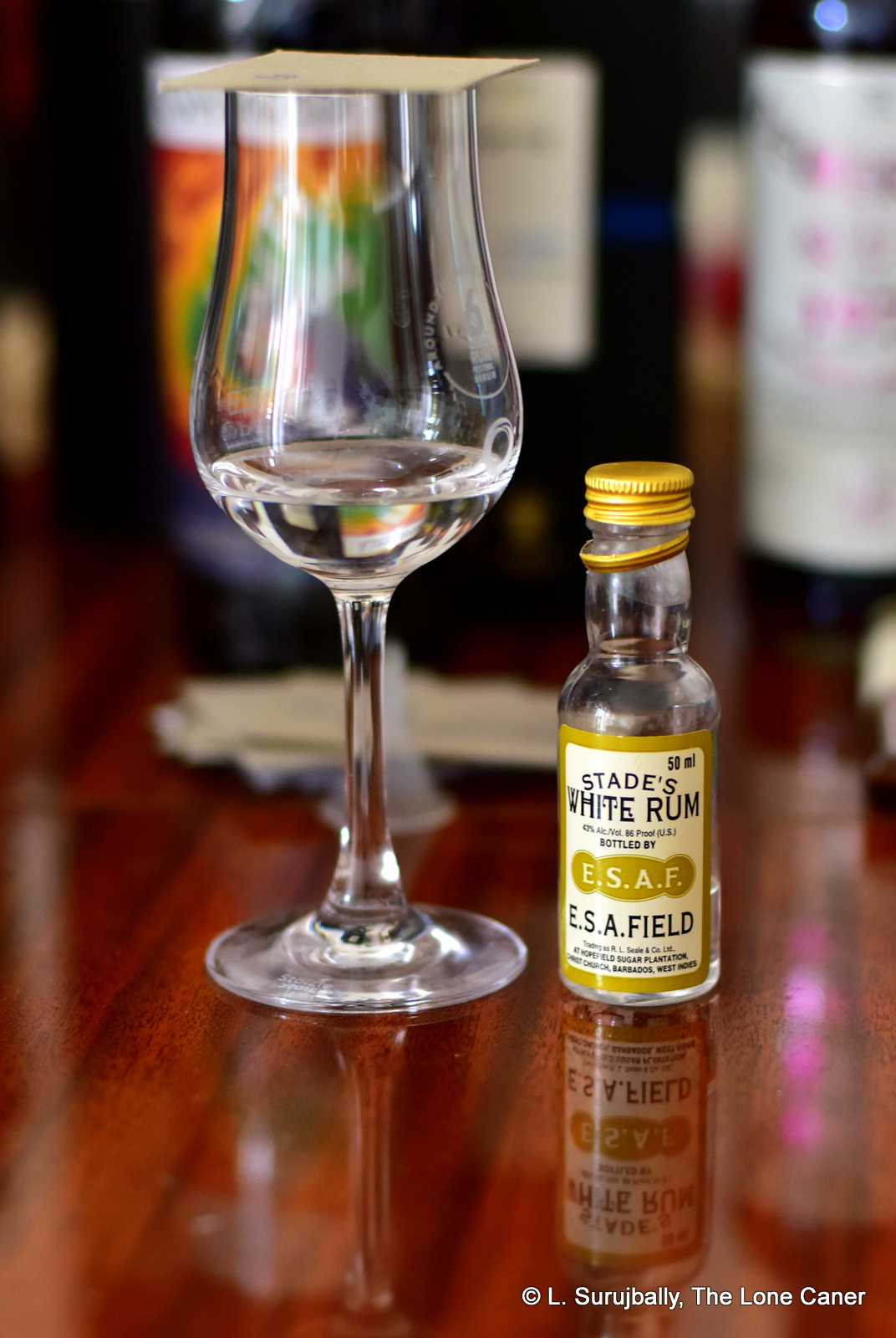
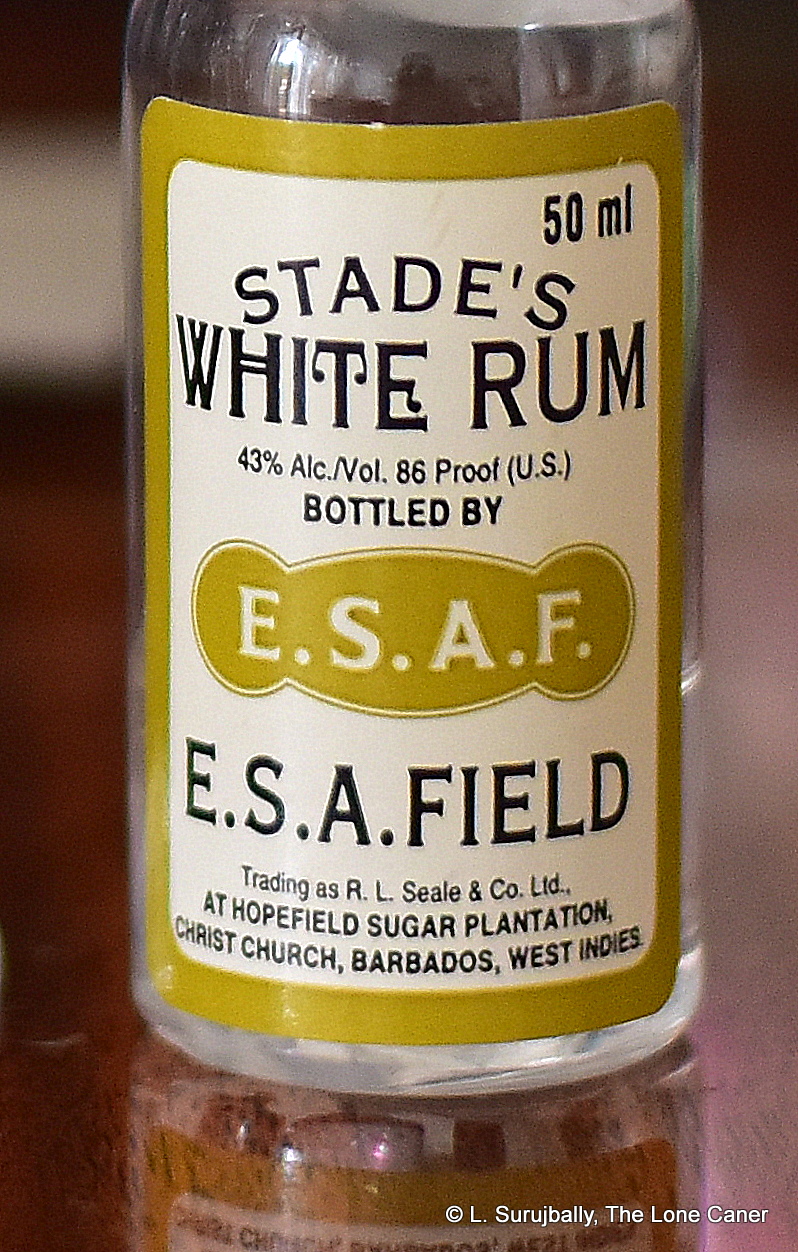
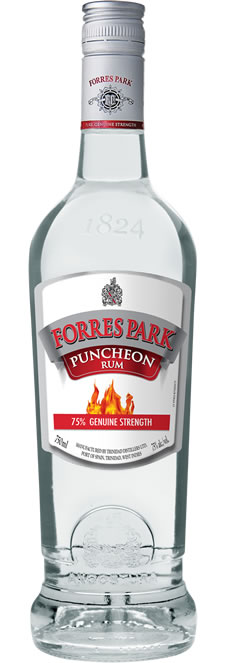
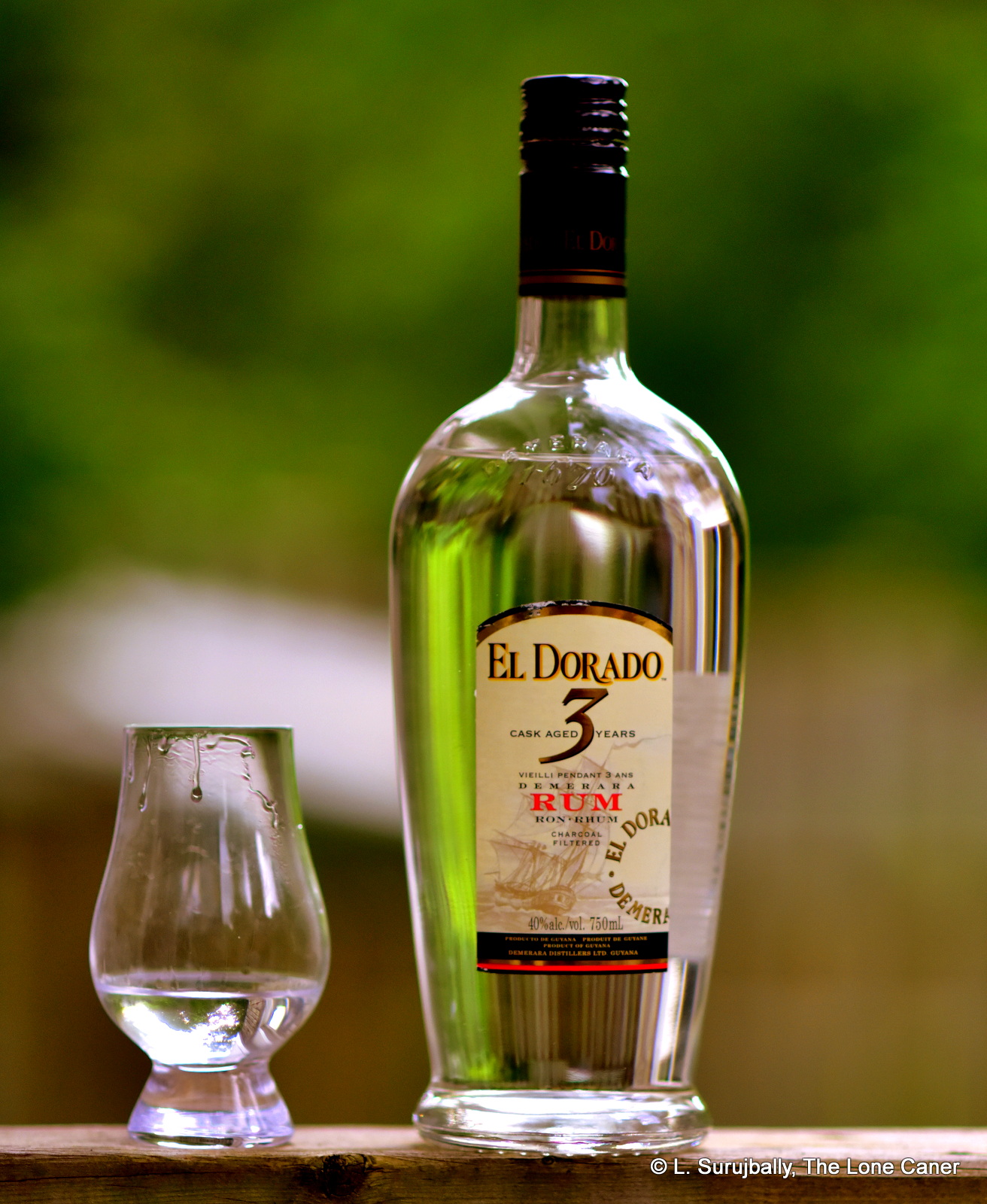
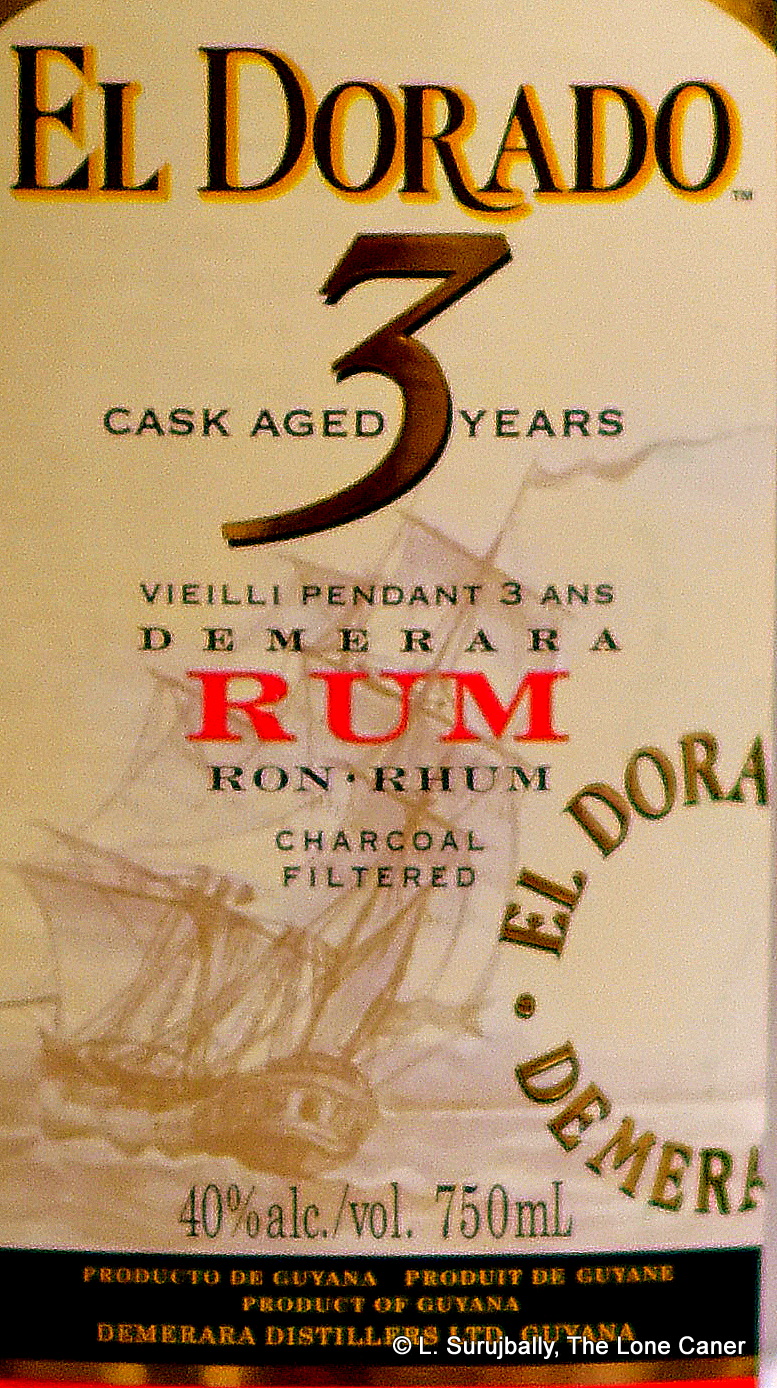 Yeah, 40%. I nearly put the thing back on the shelf just because of that. Just going by comments on FB, there is something of a niche market for well made 45-50% whites which DDL could be colonizing, but it seems that the standard strength rums are their preferred Old Dependables and so they probably don’t want to rock the boat by going higher (yet). I can only shrug, and move on…and it’s a good thing I didn’t ignore the rum, because it presented remarkably well, punching above its weight and dispelling many of my own initial doubts.
Yeah, 40%. I nearly put the thing back on the shelf just because of that. Just going by comments on FB, there is something of a niche market for well made 45-50% whites which DDL could be colonizing, but it seems that the standard strength rums are their preferred Old Dependables and so they probably don’t want to rock the boat by going higher (yet). I can only shrug, and move on…and it’s a good thing I didn’t ignore the rum, because it presented remarkably well, punching above its weight and dispelling many of my own initial doubts.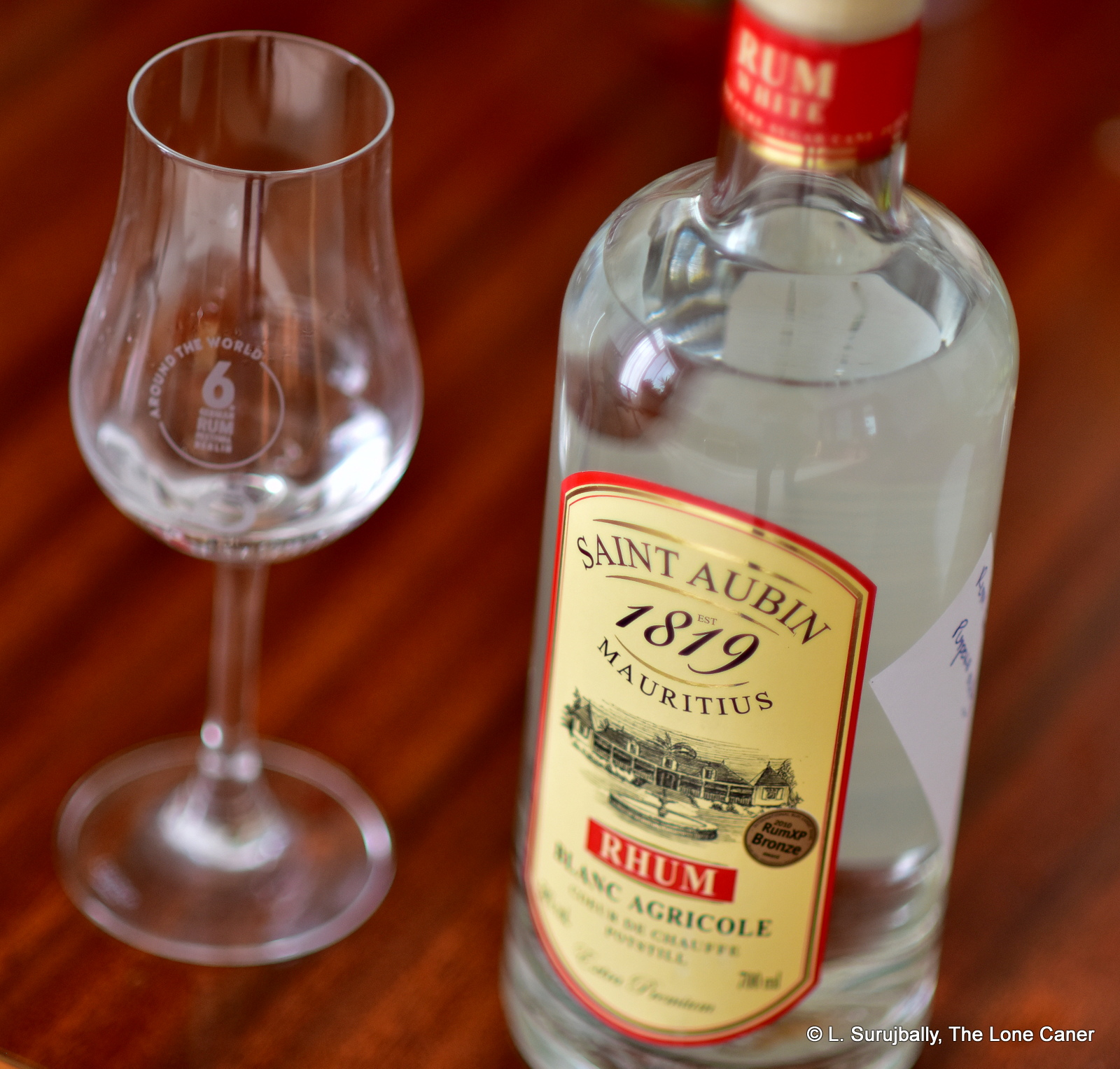
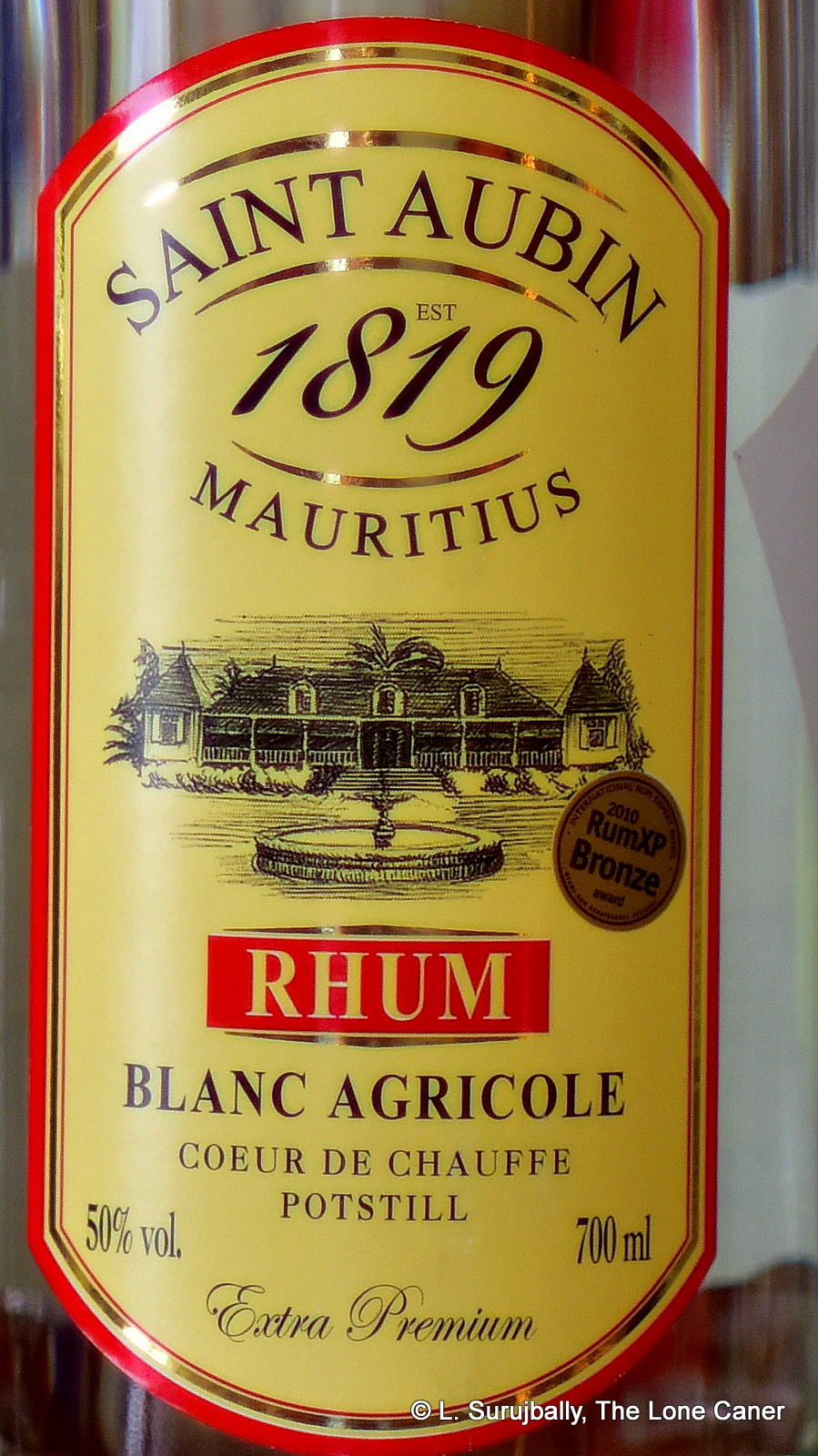 See, while furious aggression
See, while furious aggression 






















